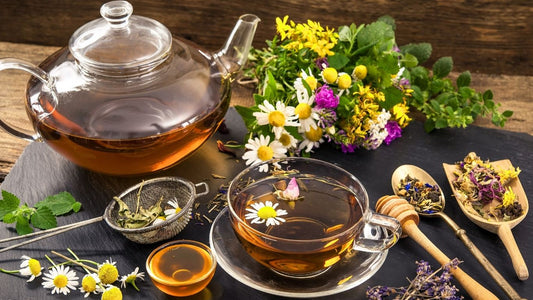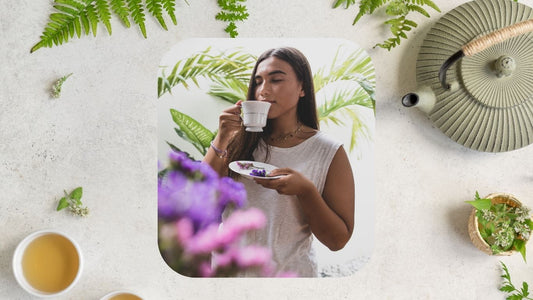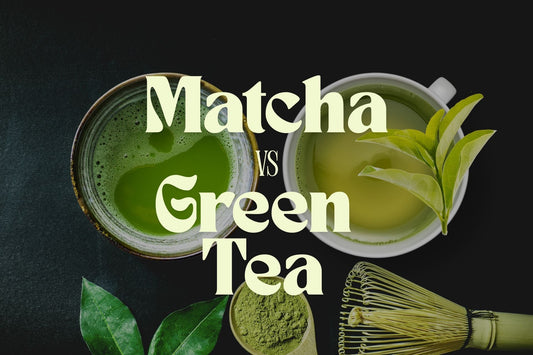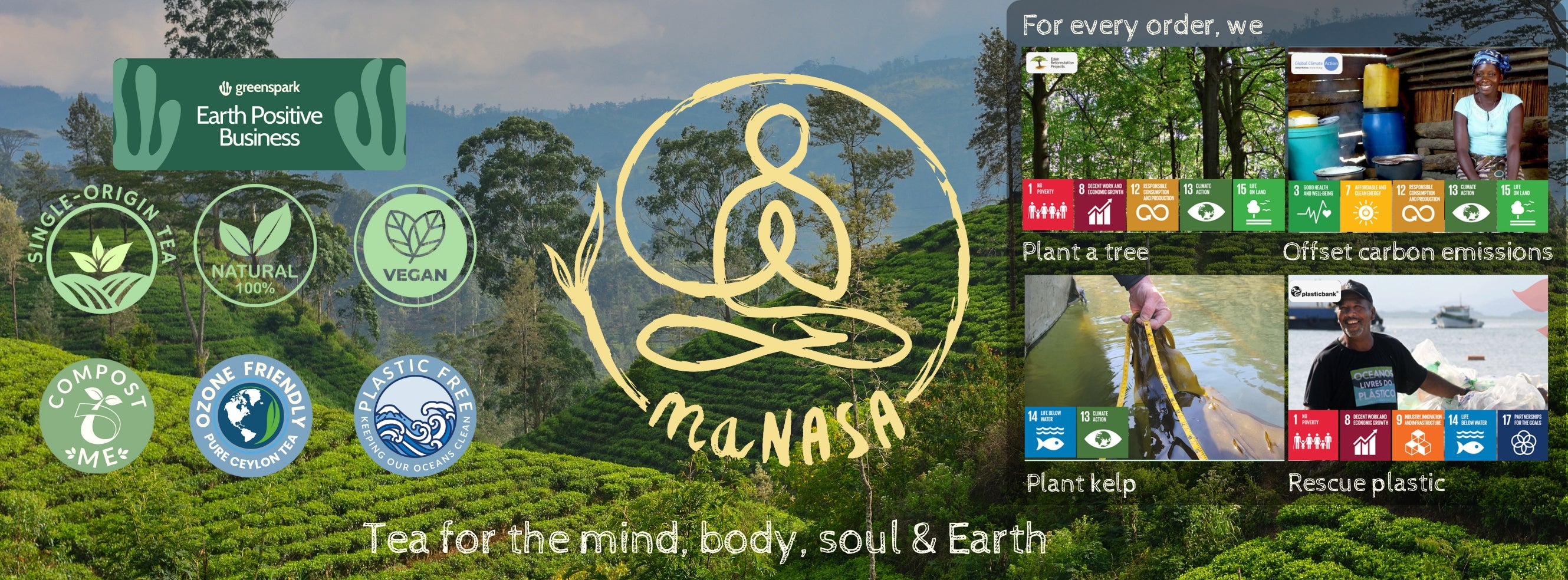When it comes to healthy beverages, Green Tea and Matcha are two of the most beloved brews worldwide. You've probably sipped both—or seen them on a café menu—but did you know that while Matcha and green Tea come from the same plant, they are surprisingly different?
In this comprehensive guide, we'll explore everything you need to know about Matcha vs. Green Tea, from their cultivation and processing methods to their flavour profiles, health benefits, and how to enjoy them. Whether you're new to Tea or a long-time tea lover, this blog will help you choose the best Tea for your lifestyle—and why your body (and brain!) might thank you.
Plus, we'll show you how to buy premium-quality Matcha and Green Tea directly from the so gud™ collection, grown in the lush mountains of Sri Lanka and packaged in planet-friendly, microplastic-free tea bags.
Table of Contents
- What Is Green Tea?
- What Is Matcha?
- The Key Differences Between Matcha and Green Tea
- Health Benefits: Matcha vs. Green Tea
- How to Brew Green Tea vs. Matcha
- Taste & Texture: What to Expect
- Caffeine Levels Compared
- Which One Is Better for You?
- Matcha and Green Tea Recipes You'll Love
- Sustainability and Packaging: Why So Gud™ Is Different
- Where to Buy Organic Matcha and Green Tea
- Final Thoughts
What Is Green Tea?
Green Tea is made from the leaves of the Camellia sinensis plant, just like black, white, and oolong tea. What makes it unique is how it's processed. Green tea leaves are quickly steamed or pan-fired after harvest to prevent oxidation. This gives it a light, grassy, or floral flavor and preserves many of its nutrients.
Green Tea has been enjoyed for thousands of years in Asia and is now a wellness staple worldwide. It's rich in antioxidants called catechins, particularly EGCG (epigallocatechin gallate), which has been studied for its ability to support heart health, metabolism, and even weight loss.
so gud™ sources organic Green Tea from Sri Lanka's high-altitude gardens, where the air is clean and the soil is rich. Our eco-friendly tea bags preserve freshness while protecting your health—no microplastics, ever.
What Is Matcha?
Matcha is also green Tea—but in a much more concentrated form. Instead of steeping the leaves, you're drinking the entire leaf in powdered form.
Matcha is made from specially grown green tea leaves (called tencha) that are shaded for about three weeks before harvest. This boosts chlorophyll, giving Matcha its bright green color and deep umami flavor. After harvest, the leaves are steamed, dried, and stone-ground into a fine powder.
This means that with Matcha, you're getting more nutrients, more caffeine, and a unique, creamy taste.
so gud™ Matcha Green Tea is ceremonial-grade, harvested from high-quality organic leaves, and perfect for lattes, smoothies, or traditional matcha whisking.
Key Differences Between Matcha and Green Tea
FeatureGreen TeaMatcha
Form Loose leaves or tea bags Fine powder
Processing Steamed/pan-fired, then dried Shade-grown, steamed, dried, ground
How You Drink It Steeped and strained Whisked into water or milk
Caffeine Moderate (25–35mg per cup) Higher (60–80mg per cup)
Flavor Light, grassy, floral Bold, creamy, umami
Nutrition Antioxidants, catechins Higher antioxidant and L-theanine content
Uses Tea, iced tea Lattes, smoothies, baking, skincare
Health Benefits: Matcha vs. Green Tea
Both teas are packed with health benefits, but Matcha delivers a more potent punch due to its concentrated form.
✅ 1. Antioxidants
- Green Tea: High in catechins like EGCG.
- Matcha: Up to 137x more EGCG than regular green Tea.
- Benefit: Fights free radicals, supports cellular health, and promotes anti-aging.
✅ 2. Heart Health
Both help lower LDL cholesterol and improve blood flow. Drinking either regularly can reduce the risk of cardiovascular disease.
✅ 3. Mental Focus & Calm
Matcha contains L-theanine, a unique amino acid that promotes relaxation without drowsiness. Paired with caffeine, it creates a "calm alertness" that's ideal for focus.
- Matcha Wins for mental clarity and productivity boosts.
✅ 4. Metabolism & Weight Loss
Both boost metabolism and support fat oxidation, especially when consumed before a workout.
✅ 5. Detox & Immunity
- Matcha is particularly rich in chlorophyll, helping cleanse the body.
- Green Tea supports the immune system and gut health.
Want to feel these benefits yourself? Try our Immunity Collection or explore our matcha-powered teas.
How to Brew Green Tea vs. Matcha
🍵 Brewing Green Tea (Hot or Iced)
- Heat water to 75–80°C (170–175°F).
- Steep 1 tsp (or 1 tea bag) for 2–3 minutes.
- Remove leaves. Enjoy plain or with lemon or honey.
Tips: Don't use boiling water—it will make the Tea bitter!
🍵 Making Matcha
- Sift 1/2–1 tsp of matcha powder into a bowl.
- Add 2 oz hot water (not boiling!) at 75°C.
- Whisk in a "W" motion until frothy.
- Add more water or milk for a matcha latte.
so gud™ Matcha is perfect for beginners and experts. Try our Matcha Coconut Latte Blend for a tropical twist!
Taste & Texture: What to Expect
Green Tea:
- Flavor: Mild, grassy, slightly astringent
- Texture: Light and watery
- Best enjoyed: Hot, iced, with lemon or mint
Matcha:
- Flavor: Rich, vegetal, creamy, slightly sweet
- Texture: Thick and velvety
- Best enjoyed: As a latte, smoothie, or traditional Tea
If you've ever had a matcha latte and noticed a slightly "seaweed-y" taste—that's natural! Higher-quality matcha (like so gud™ ceremonial grade) is smoother and less bitter.
Caffeine Levels Compared
- Green Tea: 25–35 mg per cup (depending on brew strength)
- Matcha: 60–80 mg per serving
Matcha contains more caffeine but thanks to L-theanine, the energy boost is steady and clean—no crashes or jitters like coffee.
Looking for a gentle lift? Choose green Tea. Need morning focus or an afternoon boost? Matcha's your match.
Which One Is Better for You?
It depends on your goals.
-
Choose Green Tea If You Want:
- A calming, everyday drink
- Lighter caffeine
- A refreshing iced tea option
- A gentler detox
-
Choose Matcha If You Want:
- A stronger energy and focus boost
- More antioxidants
- A creamy, luxurious flavor
- Versatility in drinks, baking, and skincare
Why not enjoy both? Explore our full Green Tea and Matcha collections.
Matcha and Green Tea Recipes You'll Love
🍵 Matcha Coconut Iced Latte
- 1 tsp so gud™ matcha
- 1/4 cup hot water
- 3/4 cup coconut milk
- Ice and monk fruit sugar to taste
- Whisk Matcha in water, add coconut milk, sweeten, and shake with ice.
🍹 Green Tea Ginger Lemon Fizz
- Brew 1 cup Green Tea, chill
- Add 1 tsp grated ginger, juice of 1/2 lemon
- Top with sparkling water and a honey drizzle
🍪 Matcha Energy Balls
- 1 cup oats, 1/2 cup almond butter, 1 tsp matcha
- Mix and roll into balls. Chill for 30 minutes.
Get more recipes when you join the so gud™ newsletter. Sign up here for exclusive tea content, recipes, and wellness tips.
Sustainability and Packaging: Why so gud™ Is Different
At so gud™, we believe health should never come at the planet's expense. That's why all our teas are:
✅ Microplastic-Free
✅ Compostable Tea Bags & Boxes
✅ Ethically Grown
✅ Shipped in Eco-Friendly Packaging
When you sip so gud™, you're not just nourishing your body—you're making a difference.
Where to Buy Organic Matcha and Green Tea
Ready to try the best-tasting, most sustainable Matcha and green Tea on the market?
Shop now at sogud4u.com
Explore our collections:
- Green Tea
- Matcha
- Calm & Relaxation Teas
- Immunity Boosting Blends
Join thousands of wellness lovers who are choosing so gud™ for their daily sip.
Final Thoughts: The Verdict on Matcha vs. Green Tea
Both Matcha and green Tea offer powerful benefits, ancient roots, and beautiful rituals. The difference lies in how you enjoy them, what you need from them, and what kind of lifestyle you live.
Want light and refreshing? Green Tea.
Need focused energy and antioxidants? Matcha.
Craving both? Build your own bundle at sogud4u.com.
☀️ Start your mornings so gud™. End your days with calm.
💚 Sign up for our newsletter to get exclusive offers, new product drops, and tea tips straight to your inbox. Join Now








